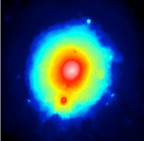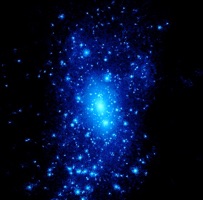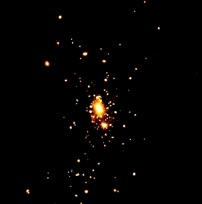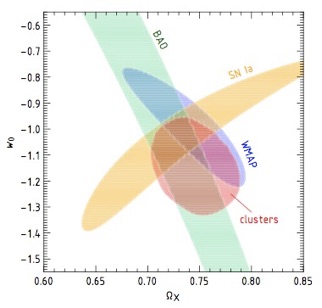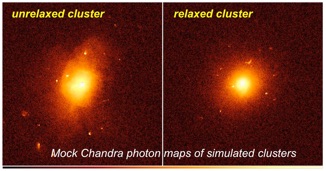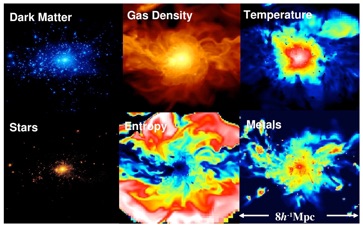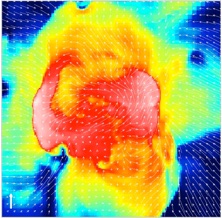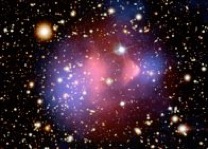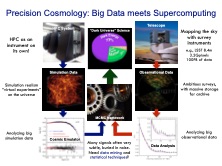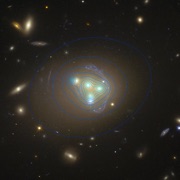energy feedback. The numerical simulations of cluster formation start from the well-defined cosmological initial conditions. In our work, we use the technique called Adaptive Mesh Refinement to greatly increase the resolution in the high density regions within clusters. The high resolution is required to follow formation and evolution of cluster galaxies and their impact on the hot intracluster medium (ICM). The panel illustrates the complexity of physical processes involved in a typical simulation. It shows distribution of dark matter, stars, and the properties of gas at the present epoch in one of the simulated clusters forming in the concordance Cold Dark Matter model with vacuum energy. In the hierachical structure formation scenario, clusters form and grow through continuous mergers and accretion of small clumps and diffuse matter from voids and filaments. The figure reveals a rich and complex structure of the gas density and temperature distributions, such as strong and highly aspherical accretion shocks surrounding the cluster and turbulent gas motions within the cluster. The cluster gas is also enriched with heavy elements ("metals"), as the metal-enriched gas is stripped off from galaxies when they orbit within the cluster.

